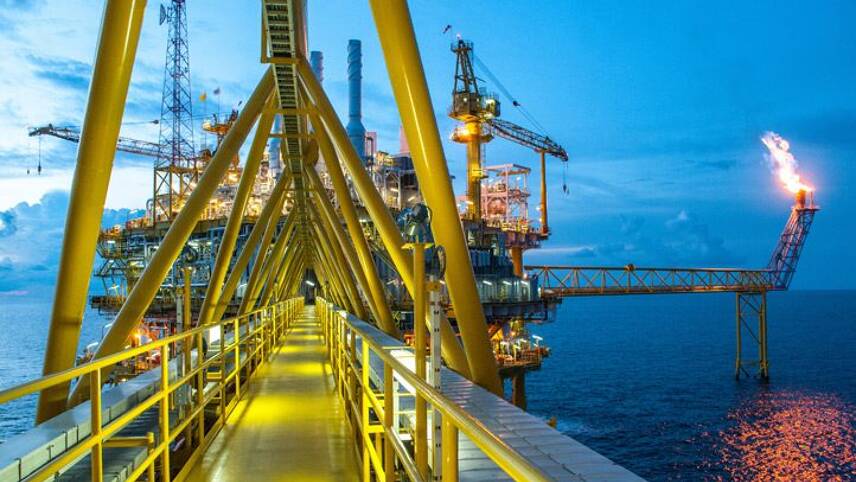Register for free and continue reading
Join our growing army of changemakers and get unlimited access to our premium content

Fossil fuel demand is projected to peak before 2030, while global oil demand could peak as soon as 2025
The Global Energy Perspective is developed by Energy Insights in collaboration with McKinsey Sustainability and the Global Energy and Materials and Advanced Industries practices.
Its findings, published today (26 April), warn that despite net-zero targets covering more than 90% of current emission levels, the world is on course to overshoot the most ambitious pathway of the Paris Agreement.
Under modelling scenarios, by 2050, renewables could account for 85% of the global power system. Yet even when combined with rapid electric vehicle (EV) uptake and low-carbon innovation, the Paris Agreement will not be fulfilled.
McKinsey finds that average warming is projected to exceed 1.7C by mid-Century, a date that many nations have set for their net-zero commitments.
The research finds that the world is rapidly transforming its power systems, with the share of renewables expected to double in the next 15 years. In contrast, fossil fuel demand is projected to peak before 2030, while global oil demand could peak as soon as 2025.
McKinsey’s senior partner Christer Tryggestad said: “In the past few years, we have certainly seen the energy transition pick up pace. Every year we’ve published this report, peak oil demand has moved closer. Under our middle scenario assumptions, oil demand could even peak in the next three to five years, primarily driven by electric vehicle (EV) adoption.
“However, even if all countries with net-zero commitments deliver on their aspirations, global warming is still expected to reach 1.7C. To keep the 1.5C pathway in sight, even more ambitious acceleration is needed.”
McKinsey’s research notes that renewables could account for 50% of all power generation by 2030, and are predicted to grow by three times their current levels by 2050.
Hydrogen is also expected to experience rapid expansion, growing 4-6 times by 2050. Primary uses for hydrogen under McKinsey’s modelling scenarios are road transport, maritime and aviation. Hydrogen and hydrogen-derived synthetic fuels are expected to account for 10% of global energy consumption by 2050.
In combination with hydrogen, carbon capture technologies are expected to grow by more than 100-fold, with investment opportunities expected to exceed the current LNG market.
McKinsey has previously stated that around $9trn annually would be required to reach net-zero emissions by 2050.
Research from McKinsey examined the sectors that are accountable for 85% of all emissions across 69 nations. The report examines how demand, spending and jobs would change in order to reach net-zero.
The report claims that, between 2021 and 2050, capital expenditure on assets for energy and land-use systems tailored towards net-zero would reach $275trn and around $9.2trn annually, almost three times greater than the current annual spend. An additional 1trn on today’s annual spending would also need to be relocated from high-emitting sectors to new low-carbon assets. McKinsey starts that this increase is equivalent to half of the recorded profits from corporates globally in 2020.
Earlier in the year, McKinsey, which is one of the world’s largest consultancies, proclaimed that global fossil fuel demand could peak by 2027.
According to the report, global energy demand is not likely to reach pre-Covid-19 levels for at least another year – four years at most. The demand for electricity and gas will rebound more rapidly than oil, a sector that was already reckoning with the prospect of degrowth due to tightening climate legislation.
Spotlight on EVs
The peak in oil is largely driven by the phase-out of traditional ICE road vehicles, McKinsey notes, with EV adaptation expected to pick up over the coming years, from almost 5% of new car sales currently to nearly 100% by 2040.
A shift in consumer behaviours will also contribute to the phaseout, McKinsey notes, with the use of public transport and greater uptake of ride-sharing platforms expected to reduce the total mileage of private vehicles.
McKinsey also notes that the cost of EVs will be reduced in the long-run for consumers, even if upfront costs remain high. Depending on vehicle size and country, the upfront cost of EVs is currently around 30 to 90% higher than an ICE vehicle. If net-zero is reached by 2050, the total ownership costs of EVs will be lower than ICE vehicles by 2025 in Europe and 2030 in the US.


Thanks for this great piece!
Probably the link embedded in Global Energy Perspective would be https://www.mckinsey.com/industries/oil-and-gas/our-insights/global-energy-perspective-2022.